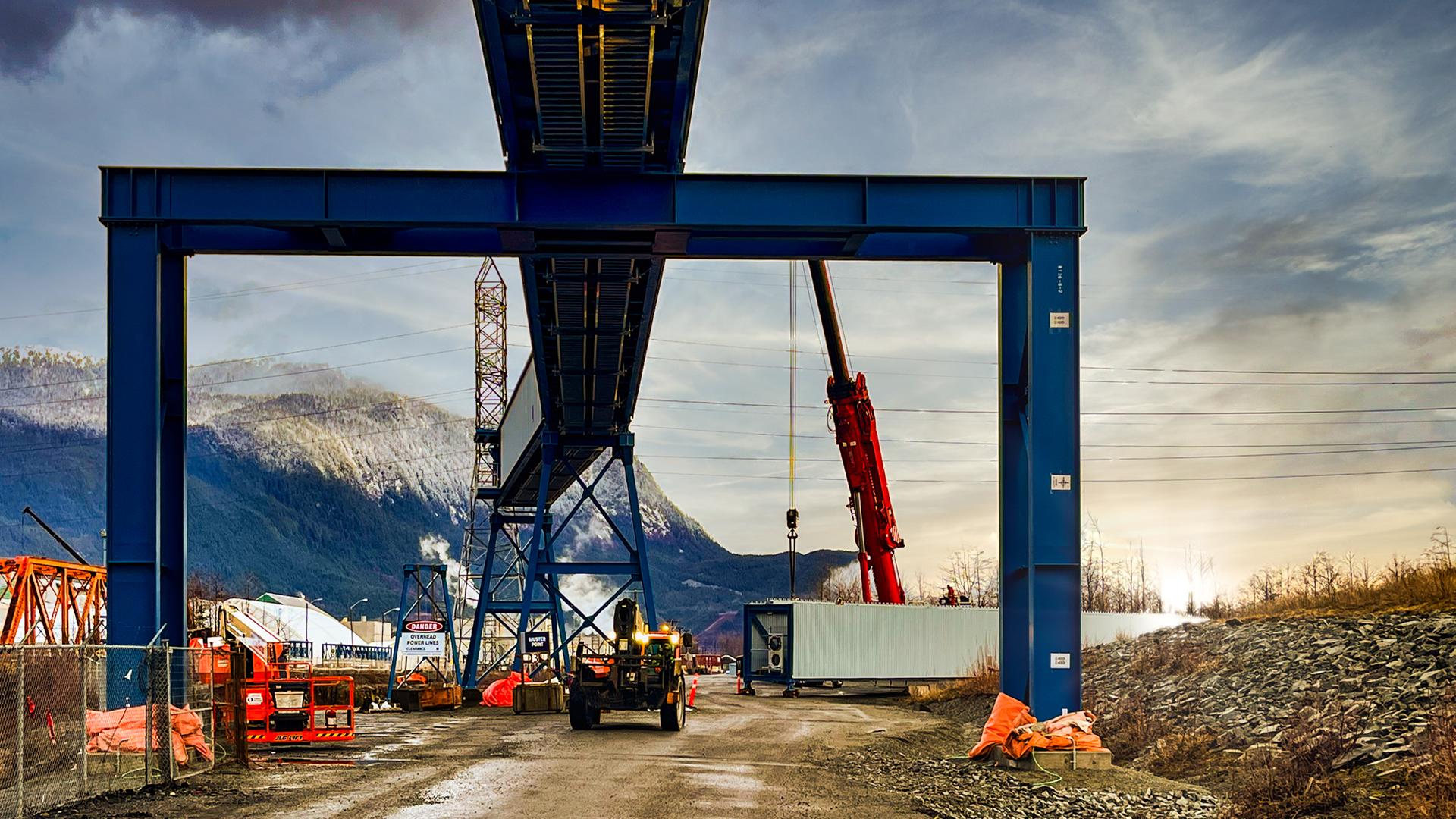

In the rugged, rain-soaked terrain of northern British Columbia, FWS has completed what may be one of its most technically demanding bulk material handling projects to date—a 1.2-kilometre overland pipe conveyor system engineered and installed as part of a larger modernization effort at an industrial operation near Kitimat.
The project’s highlight? Pulling a continuous belt over an extended curved path—a feat that combines mechanical ingenuity, structural precision, and strategic coordination. For FWS, it wasn’t just about building a conveyor. It was about solving complex problems in an environment where curve tolerance, seismic sensitivity, and logistical constraints converge.
“This is the first time FWS has installed a pipe conveyor of this scale,” said Phil Watts, Managing Director, Bulk Material Handling for FWS. “In my 20 years in the industry, I haven’t seen many projects quite like this.”
Pipe conveyors differ from traditional trough-style systems in one key aspect: they form a closed, tubular belt that can bend along vertical and horizontal curves. This design makes them ideal for navigating difficult landscapes without the need for multiple transfer towers or sharp directional changes.
“The belt starts flat in the loading zone of the conveyor, and as it moves, it's formed into a pipe,” explained Andrew Smith, Manager of Project Management for FWS. “That gives us the flexibility to snake horizontally and vertically through the terrain—something that’s impossible with conventional straight-line systems.”
This flexibility is more than just a design convenience. It allows for reduced environmental disturbance and fewer structural interruptions, which in Kitimat’s sensitive ecological zones—including salmon-bearing rivers—can be the difference between approval and abandonment.
Installing this system required a level of alignment accuracy and erection tolerances over and above those typical of standard conveyor projects. Unlike prefabricated systems where alignment is largely engineered offsite, this system demanded on-site tolerance engineering and quality control across every section of the truss structure. With the belt eventually pulled across curves and varying elevations, even a millimetre of misalignment could create significant downstream challenges.
“Every roller, every conveyor truss—everything had to be designed, shimmed, and checked with rigorous QA/QC before the belt pull began,” said Smith.
FWS was responsible not only for constructing the trusses but for the strategic engineering behind them—calculating sag tolerances, compensating for steel deflection, and ensuring the pipe belt formed perfectly through the full length of the system.
The belt itself—shipped in 375-metre segments—was spliced in seven vulcanized sections, each requiring precision and care. While FWS coordinated with specialty partners for belt pulling and splicing, the company played a pivotal role as the integrator, ensuring that vendors, engineers, and field teams were unified in their methodology.
“Our role was the coordination and glue,” said Watts. “We made sure every party—from belt manufacturers to splice technicians—were aligned in method, timing, and tolerances. The success of the pull depended on it.”
As a design-build contractor, FWS was involved from concept through commissioning—reviewing multiple technical approaches with the client before landing on the pipe conveyor solution. Their early involvement meant fewer surprises and more efficient decision-making.
“A traditional General Contractor (GC) might get handed a design and told to build it. We’re different,” noted Watts. “We engage from the line-on-paper stage and carry it all the way to a running system.”
That upstream involvement proved critical, particularly on a site with unique challenges: aging plant infrastructure, heavy snowfall, seismic concerns, and a landscape that required careful navigation—both physically and politically.
This project also represents something larger for FWS: a deepening commitment to Indigenous partnership and reconciliation. The Kitimat area, once impacted by the flooding of Cheslatta Carrier Nation lands during the Kemano hydroelectric expansion, has seen renewed engagement between industry and Indigenous communities. Through their work on this project, FWS has formed stronger ties with local Nations—advancing not only infrastructure but trust.
“Our relationship with the Cheslatta First Nation has grown meaningfully through this project,” said Smith. “We’ve learned a lot, and it’s something we’ll carry forward.”
While FWS has decades of experience in belt systems and bulk handling infrastructure, this project sets a new benchmark for scale, complexity, and integrated delivery. From strategic vendor coordination and extreme environmental conditions to Indigenous engagement and curved conveyor alignment, the Kitimat project proves out FWS’s model: early involvement, deep expertise, and complete project ownership.
“It's more than a belt,” Watts concluded. “It’s a testament to what’s possible when engineering, construction, and purpose alignment.”
Sources: